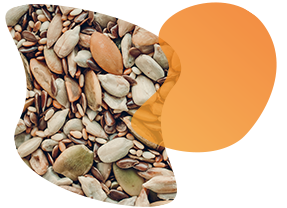Originally published : Wed, August 4, 2021 @ 8:08 PM
Updated : Thu, August 12, 2021 @ 11:51 PM
Informed plant breeding decisions help drive the field of agrigenomics towards ever-increasing agricultural productivity. But effective decisions cannot be made without strong underlying NGS data, which is dependent upon an extensive and complex workflow.
Sample processing is the first step in the next generation sequencing (NGS) workflow, and decisions made at this point impact whether low- or high-quality DNA/RNA is obtained, which directly affects the success of NGS. Given the importance of these initial decisions, they deserve significant consideration before embarking on any agrigenomics project. Read more to discover what factors should be considered before getting started.
We have all heard the phrase “good data in, good data out”, but how do you get high-quality input? It starts with good sample collection and extraction.
The following key considerations should be addressed before getting started:
- Goals/objectives: What is the project’s background and desired outcome?
- Downstream applications: What is the ideal sample type for the downstream technology that will be used? Will there be fragment length constraints for library construction?
- Price: What is the total budget and where can cost savings come into play without sacrificing quality?
- Throughput: What is the breeding peak for the desired sample type, and what type of flexible automation will be needed to accommodate the number of samples?
- Starting material: What unique characteristics of each sample must be considered? How will these characteristics impact the quality of the DNA/RNA you will obtain and what you can do to minimise contaminants that will negatively affect downstream steps? This is perhaps the most important starting consideration due to the large range of sample types.
The importance of good starting material cannot be overstated, and each sample has specific attributes that need to be identified and accounted for as you design your extraction and purification. Extracting DNA from plant cells can be more challenging than animal cell extraction given the toughness of plant cell walls, and starting material is often compromised in an effort to overcome this barrier.
Avoid common pitfalls to get your workflow off to the best start by considering:

- Best options for mechanical homogenisation, or grinding parameters, tailored to your sample type.
- Sample characteristics (for example, sample age, size, and even dried versus fresh) can impact aspects of your protocol, including the size of your grinding balls and the speed at which you homogenise.
- Removal of intrinsic sample components (for example, starch, oil and other contaminants) during purification.
- Accommodating the quantity of genomic material needed for downstream applications; this will help you decide how much starting material is needed to ensure your purification has a sufficient yield.
Never underestimate the importance of quality sample collection and prep in your plant breeding workflow. Extra consideration during this phase will help remove challenges downstream, produce the highest quality data, and set the bar for how successful your NGS project can be.
Learn more about how LGC, Biosearch Technologies can help optimise sample preparation for NGS applications.

